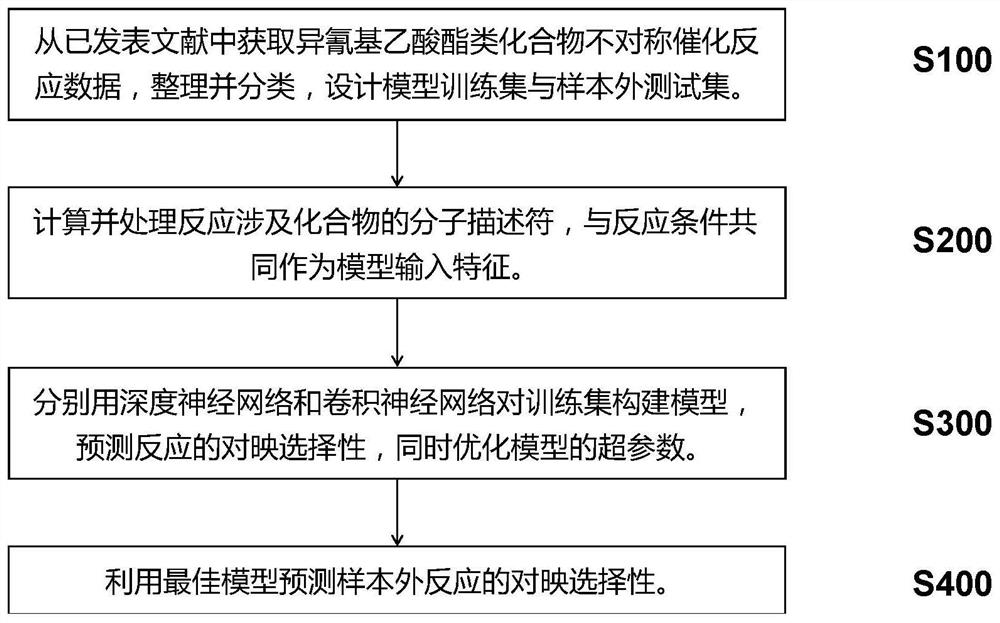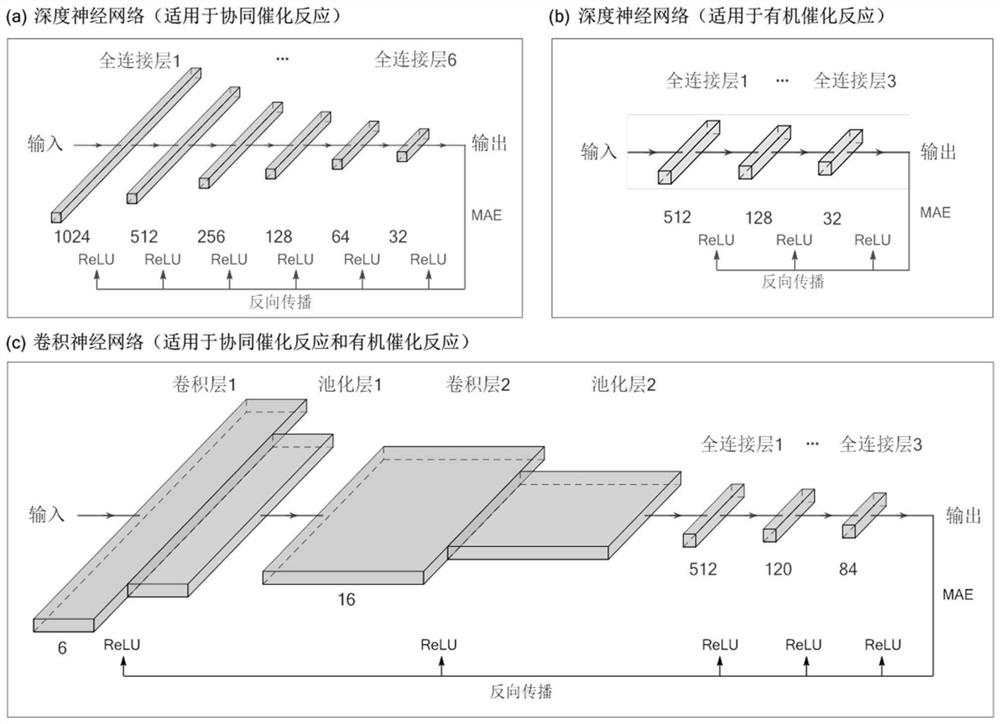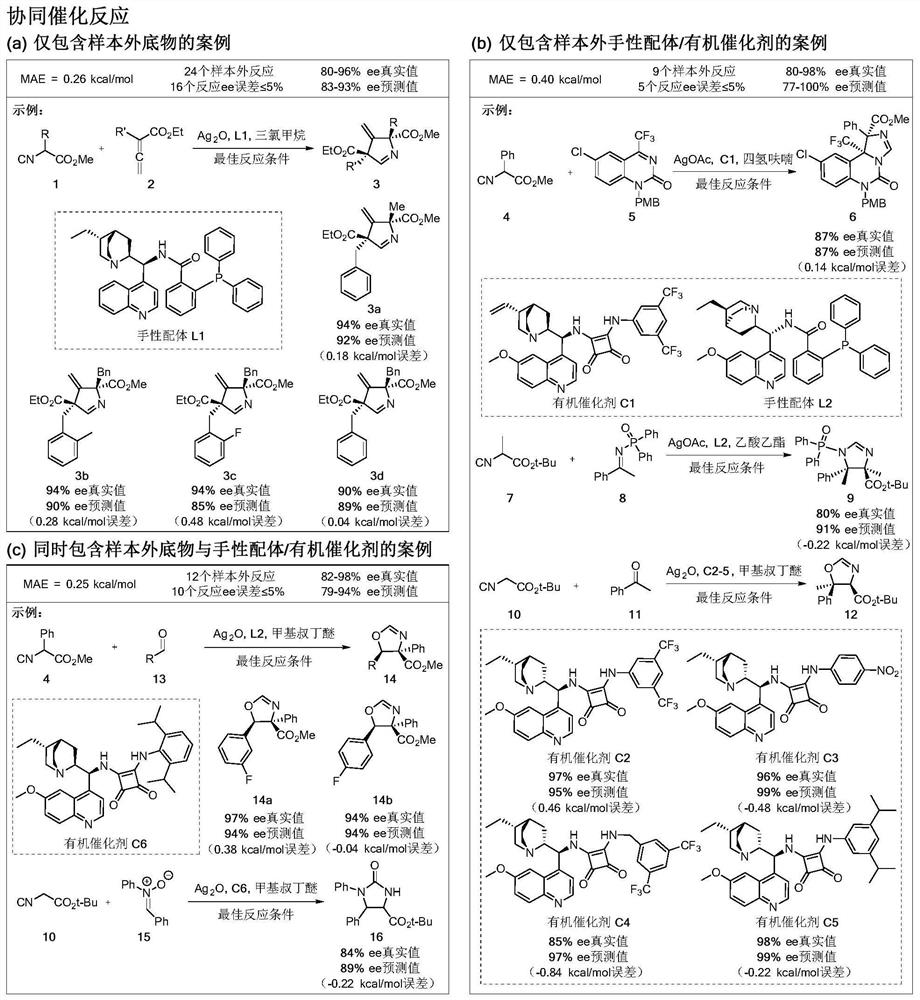Asymmetric catalytic reaction enantioselectivity prediction method based on deep learning
An enantioselective, catalytic reaction technology, applied in the intersection of computer science and chemical organic synthesis, which can solve the problems of single reaction type, small number of samples, and complex overall method.
- Summary
- Abstract
- Description
- Claims
- Application Information
AI Technical Summary
Problems solved by technology
Method used
Image
Examples
Embodiment Construction
[0026] Embodiments of the invention are described in detail below, examples of which are illustrated in the accompanying drawings. The embodiments described below by referring to the figures are exemplary only for explaining the present invention and should not be construed as limiting the present invention.
[0027] see Figure 1-Figure 4 , an embodiment of the present invention is a method for predicting enantioselectivity of asymmetric catalytic reactions based on deep learning, which includes the following steps:
[0028] Step S100: Obtain data of asymmetric catalytic reactions involving isocyanoacetate from published literature, organize and classify, and design model training set and out-of-sample test set. Specifically include the following steps:
[0029] Step S101: Perform a literature search by searching keywords, collect and sort out the literature that conforms to the general formula of the asymmetric catalytic reaction involving isocyanoacetate.
[0030] Step S...
PUM
 Login to View More
Login to View More Abstract
Description
Claims
Application Information
 Login to View More
Login to View More - R&D
- Intellectual Property
- Life Sciences
- Materials
- Tech Scout
- Unparalleled Data Quality
- Higher Quality Content
- 60% Fewer Hallucinations
Browse by: Latest US Patents, China's latest patents, Technical Efficacy Thesaurus, Application Domain, Technology Topic, Popular Technical Reports.
© 2025 PatSnap. All rights reserved.Legal|Privacy policy|Modern Slavery Act Transparency Statement|Sitemap|About US| Contact US: help@patsnap.com



